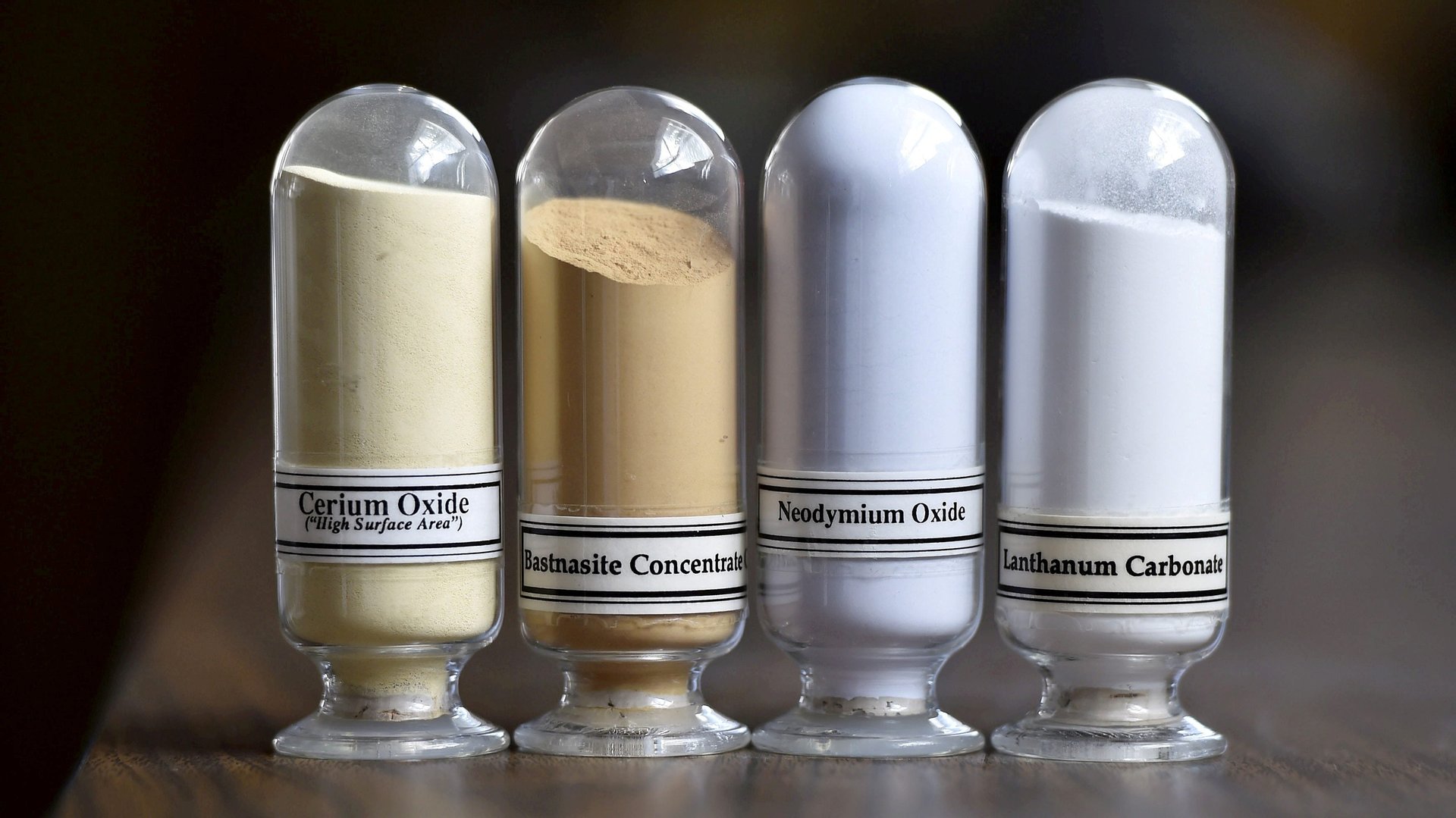A new US-Europe rare earths supply chain is using a “very Chinese model” to counter China
Last week, the first container of mixed rare earth carbonates began making its way from the US for further processing in Estonia, marking a major step in the launch of US-Europe rare earth supply chain that’s aimed at reducing reliance on China for the critical minerals.


Last week, the first container of mixed rare earth carbonates began making its way from the US for further processing in Estonia, marking a major step in the launch of US-Europe rare earth supply chain that’s aimed at reducing reliance on China for the critical minerals.
Still, segments of the US-Europe supply chain have significant exposure to China, illustrating just how intertwined global supply chains are. What’s more, the effort to curb dependence on Beijing is actually, to a certain degree, modeled off of China’s successful rare earth strategy.
How China made rare earths mining cheaper
The transatlantic supply chain was first announced in March, bringing together two North American companies in a joint initiative to diversify rare earth supplies. New York-listed Energy Fuels, a major American uranium miner, is processing monazite sands to produce rare earth carbonates, which are then sent to Estonia, where the Canada-headquartered Neo Performance Materials has a processing facility to separate the mixed rare earth carbonates into individual elements for use in manufacturing high-tech products like rare earth magnets.
Monazite is one of the world’s primary minerals that is mined for its rare earths, and is itself a byproduct of mining heavy mineral sands for titanium and zirconium. Monazite contains uranium, which Energy Fuels extracts for use in generating nuclear energy, while also recovering rare earths in the process. Rare earths are a group of 17 metals critical in the manufacturing of numerous electronic products that power the global economy, including electric vehicles and wind turbines, and demand for which is expected to soar as the world transitions to clean energy.
🎧 For more intel on clean energy initiatives, listen to the Quartz Obsession podcast episode on rare earths. Or subscribe via: Apple Podcasts | Spotify | Google | Stitcher.
This approach of extracting rare earths from the byproducts of mining operations addresses one of the key challenges of setting up a rare earth mining and processing facility: high startup costs. It can cost millions of dollars to explore a potential mining site, and then to conduct feasibility and environmental studies to determine that there are sufficient rare earths in high enough concentrations to sell the final rare earth products at a profit margin that covers the initial investment and subsequent expenses. And that’s if global rare earth prices don’t suddenly crash, which could stall operations and bankrupt businesses if the metals become cheaper than what it costs to dig them out of the ground.
The byproducts approach is also one that has served China very well, playing a part in cementing its role as the dominant global player in rare earths.
“Byproduct economics” 101
Speaking during a quarterly earnings call in March, Neo Performance Materials CEO Constantine Karayannopoulos described his company’s US-Europe supply chain project with Energy Fuels as being very capital efficient, very low cost, and very Chinese.
“[W]e followed…a very Chinese model of putting this project together,” said Karayannopoulos, in response to an analyst question about the new supply chain.
In explaining how the US-Europe supply chain is optimizing “byproduct economics” such that “mining costs are essentially paid for by…different operations,” Karayannopoulos referred to Baotou Steel, a Chinese state-owned iron and steel enterprise that mines iron ores that contain rare earths, then provides the critical metals to its rare earths subsidiary. (That rare earth subsidiary was regrouped in 2015 to form China Northern Rare Earth, one of China’s six major state-owned rare earth giants.)
In a similar way, Energy Fuels obtains monazite from US-based chemicals company Chemours, which has stockpiled monazite from its titanium mining operations.
More containers of mixed rare earth carbonates are expected to be shipped from the US to Estonia in the coming months, barring obstacles posed by shipping container shortages.
The new supply chain, said Karayannopoulos, “begins to unlock the extraordinary economic and environmental potential presented by utilizing low-cost rare earth feedstock from monazite ore that is a byproduct of existing mining.”